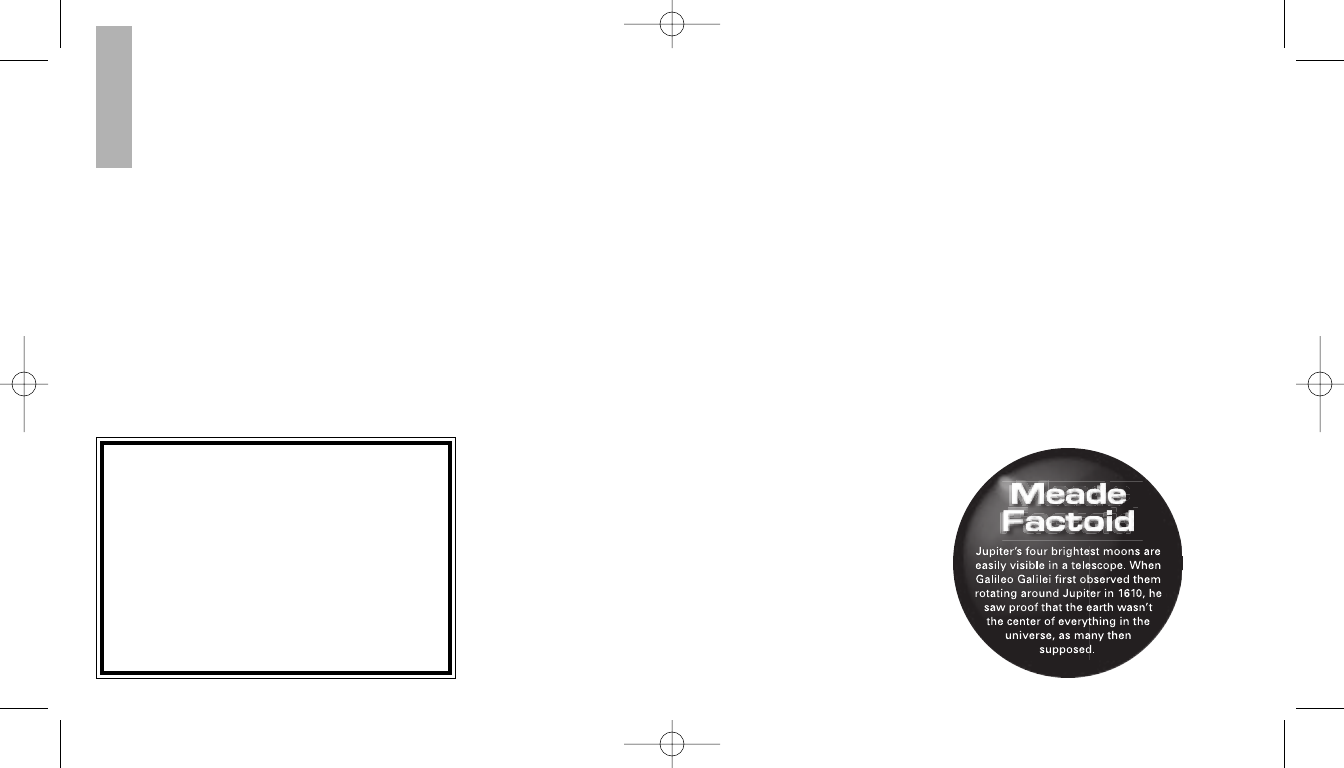
wish to move the telescope in very
small (fine control) steps.
Observe the Moon: When you feel
comfortable with the viewfinder, the
eyepieces, the locks and the
adjustment controls, you will be ready to try
out the telescope at night. The Moon is the
best object to observe the first time
you go out at night. Pick a night when the
Moon is a crescent. No shadows are seen
during a full Moon, making it appear flat
and uninteresting.
Look for different features on the Moon. The
most obvious features are craters. In fact
you can see craters within craters. Some
craters have bright lines about them. These
are called rays and are the result of material
thrown out of the crater when it was struck
by a colliding object. The dark areas on the
Moon are called maria and are composed of
lava from the period when the Moon still had
volcanic activity. You can also see mountain
ranges and fault lines on the Moon.
Use a neutral density filter (often called a
“moon filter”) when observing the Moon.
Neutral density filters are available from
Meade as an optional accessory and
enhance contrast to improve your
observation of lunar features.
Spend several nights observing the Moon.
Some nights, the Moon is so bright that it
makes other objects in the sky difficult to
see. These are nights that are excellent for
lunar observation.
Observe the Solar System: After observing
the Moon, you are ready to step up to the
next level of observation, the planets. There
are four planets that you can easily observe
in your telescope: Venus, Mars, Jupiter
and Saturn.
Nine planets (maybe more!) travel in a fairly
circular pattern around our Sun. Any system
of planets orbiting one or more stars is
called a solar system. Our Sun, by the way,
is a single, yellow dwarf star. It is average as
far as stars go and is a middle aged star.
Beyond the planets are clouds of comets, icy
planetoids and other debris left over from
the birth of our sun. Recently astronomers
have found large objects in this area and
they may increase the number of planets in
our solar system.
The four planets closest to the Sun are rocky
and are called the inner planets. Mercury,
Venus, Earth and Mars comprise the inner
planets. Venus and Mars can be easily seen
in your telescope.
Venus is seen before dawn or after sunset,
because it is close to the Sun. You can
10
JOIN AN ASTRONOMY CLUB, ATTEND A STAR PARTY
One of the best ways to increase your knowledge of
astronomy is to join an astronomy club. Check your
local newspaper, school, library, or telescope dealer/
store to find out if there’s a club in your area.
Many groups also hold regularly scheduled Star Parties
at which you can check out and observe with many
different telescopes and other pieces of astronomical
equipment. Magazines such as
Sky and Telescope
and
Astronomy
print schedules for many popular Star
Parties around the United States and Canada.
Meade80EQ-AR 4/28/06 9:55 AM Page 12


















